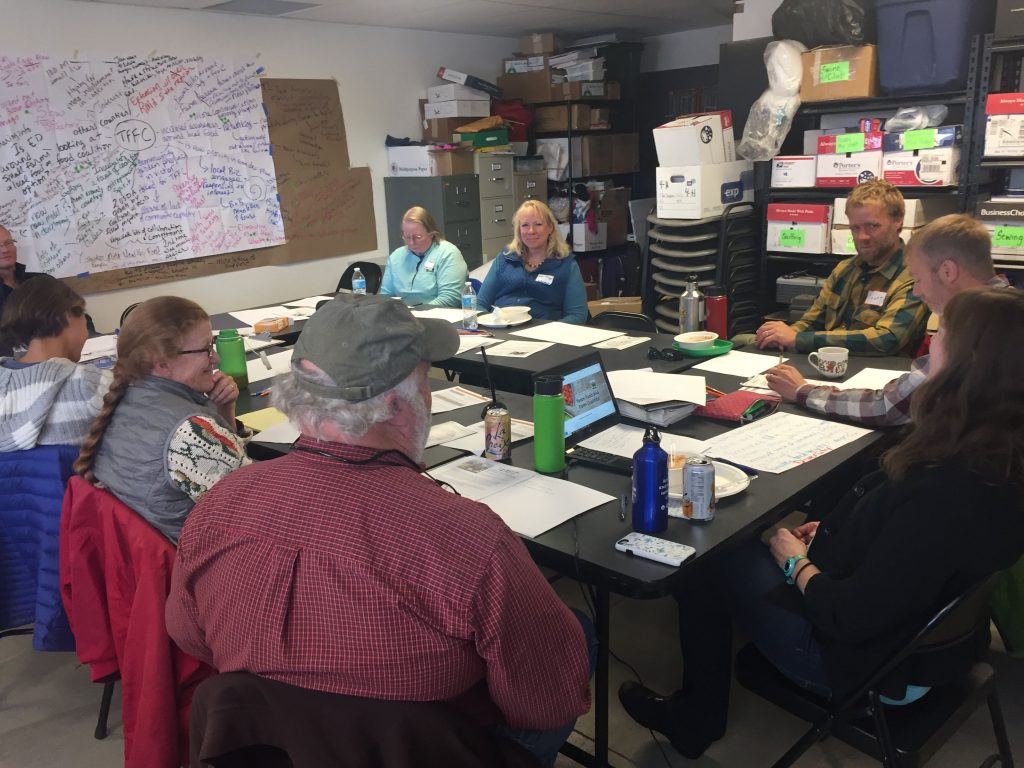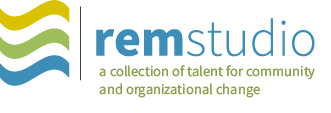Key Process Components
Conversations: Appreciative inquiry
Group Activities: Interactive group interviewing, reflection and radiant thinking
Products: Mind map (large hand drawn on the wall & digital) & data analysis

Key Process Steps
Pair up for interviews
Share and build on stories
Map ripples on the wall as stories unfold
Reflect as a group and decide on next steps
REM WAS CREATED TO CAPTURE SHORT, MEDIUM AND LONG TERM IMPACTS OF COMPLEX AND EVOLVING DEVELOPMENT WORK IN RURAL COMMUNITIES.
Ripple Effects Mapping (REM) was developed to conduct a longitudinal impact analysis of Horizons, an 18-month community-based program designed to strengthen community leadership and subsequently reduce poverty. As part of this ripple mapping effort, individual stories from Horizons communities were rippled out and then coded to the Community Capitals Framework. This approach, piloted in Washington, Idaho and North Dakota Horizons communities, employed mind maps to illustrate accomplishments to community members (we call this the “impact story”) and to increase enthusiasm for action. REM emerged from the central question – how do you evaluate the impacts of a program that lasts so long, has multiple players, and several different activities?
National interest in Ripple Mapping was immediate. Evaluators and community developers all over the country have adopted REM, with some adapting the process in different ways.
Steps in the Process
1. Bring program participants together for a two-hour session
Community development programs are typically multi-pronged, with several groups of citizens working on different community improvement projects. Coming together to reflect on progress across projects allows participants to feel they are part of something big and consequential! This is participatory evaluation at its best.
2. Pairs spend 15 minutes discussing appreciative questions developed ahead of time by facilitators and program leaders
REM initiates appreciative inquiry in two stages. This is the first. Providing time to think out loud with one other person before speaking to the larger group creates a comfortable story-telling atmosphere. Participants are more likely to share their personal contributions and (without feeling like they are bragging!) in this setting.
3. Taking turns, pairs share their stories while the facilitator maps them on a large piece of butcher paper on the wall
Facilitators probe to unravel causal chains and tangible impacts and to uncover how community members’ work has changed relationships, knowledge, attitudes, organizations and institutions, while all participants are invited to build on and add details to each story. The Community Capitals Framework is embedded into this second phase of appreciative inquiry.
4. The group is invited to reflect on their map and their work
This opportunity to make observations about where there were fewer ripples than expected and where dense, extended nests of ripples came from their work results in additional overarching insights about program impacts. The whole group is also invited to discuss what they want to do with their data. Data is simultaneously digitized into mind mapping software by a co-facilitator.
The digitized version can be enhanced with photos and quotations and sent to the group in electronic form and/or printed poster size to share as they see fit. Evaluators can then download digitized data into spreadsheets and qualitative analysis software for further analysis.

Want More Information?
See our Resources section for more background, how-to, and inspiration.
We encourage you to read or download the free A Field Guide to Ripple Effects Mapping to see the range of approaches to this wonderful tool that can be adapted to evaluate a wide range of programs, projects and organizations! Want a bound copy? Order it here.
